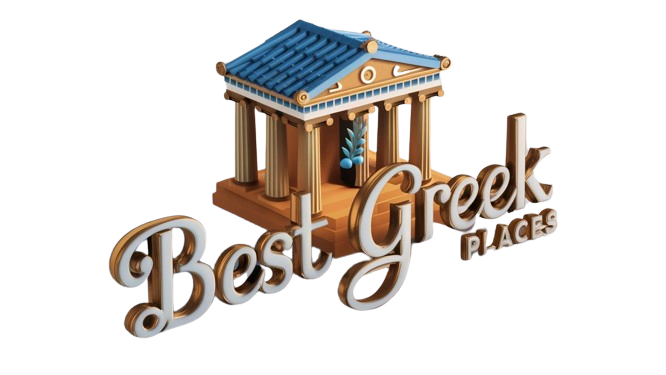The Timeless Elegance of the Discobolus: A Glimpse into Ancient Artistry
The world of ancient art is filled with masterpieces that capture the essence of humanity, beauty, and athleticism. One such extraordinary work is the Discobolus, or Discus Thrower, a remarkable sculpture that epitomizes the artistry of classical Greece. Originally crafted by the renowned sculptor Myron around 450 B.C.E., this piece represents far more than just a figure in motion; it embodies the ideals of strength, grace, and the pursuit of excellence.
A Masterpiece in Motion
The Discobolus signifies a moment frozen in time—the very moment before the discus is launched into the air. Myron’s genius lies in his ability to capture the dynamic energy of the athlete, illustrating the balance between power and precision. This not only showcases the physical prowess of the figure but also allows viewers to feel the tension and anticipation of the throw.
The Influence of Greek Athleticism
Rooted deeply in the values of Ancient Greece, the Discobolus reflects the cultural significance of athleticism during its time. The Greeks revered physical fitness and competition, considering them essential elements of a noble life. Through this sculpture, Myron immortalized the spirit of the ancient games, celebrating the human body and its capabilities.
The Journey Through Time
Although the original Discobolus was a bronze figure, many copies were made, particularly during the Roman era. These replicas have allowed the sculpture to endure throughout centuries, ensuring that Myron’s vision continues to inspire contemporary audiences. The Romans were particularly fond of Greek art, resulting in numerous adaptations of this iconic statue.
An Icon of Classical Art
Today, the Discobolus remains an enduring symbol of classical art. Its elegant form and perfect proportions continue to mesmerize art enthusiasts, historians, and visitors alike. The sculpture transcends mere representation; it inspires admiration for both the artist and the athlete, serving as a testament to the timeless appeal of well-crafted artistry.
The Role of the Roman Copy
The Roman copy of the Discobolus, which can be found in various museums, showcases the enduring nature of Greek sculptures. These replicas played a crucial role in preserving ancient artistry, allowing future generations to appreciate the work’s aesthetic and philosophical implications. By studying these copies, we gain insights into the original context and significance of Myron’s creation.
Analyzing the Artistic Technique
Myron’s technique in the Discobolus is noteworthy. The attention to detail and use of contrapposto—where the weight is shifted onto one leg—creates a sense of realism and life within the sculpture. This method not only enlivens the figure but also invites the audience to engage with the piece, prompting them to ponder the story behind the thrown discus.
The Ideal Athlete Representation
The Discobolus serves as a representation of the ideal athlete form, showcasing the harmony of physical strength and aesthetic beauty. Myron’s vision was inspired by the Olympic ideals, emphasizing the importance of training, discipline, and excellence. The sculpture stands as a reminder of the values that underpin athletic accomplishment and human endeavor.
Cultural Significance Through the Ages
Throughout the ages, the Discobolus has symbolized more than just athletic pursuits; it has come to represent the broader ideals of human achievement. Its importance in discussing topics such as perseverance, hard work, and the quest for greatness makes it a relevant subject in various contexts, from art and history to sports and philosophy.
The Enduring Legacy of Myron
Myron’s Discobolus not only showcases the artistry of his era but also contributes significantly to our understanding of cultural values in ancient Greece. This labor of love resonates through time, continuing to speak to individuals who dream of mastering their crafts and achieving their goals. The legacy of Myron remains profound, captivating audiences and inspiring future artists.
A Subject of Continuous Study
Historians and art scholars continue to study the Discobolus, uncovering new layers of meaning behind this iconic sculpture. Its placement in various cultural exhibitions permits ongoing analysis and appreciation, shedding light on the technical mastery and philosophical underpinnings of Myron’s work. This ongoing exploration ensures that the Discobolus remains a vibrant topic within academic and artistic discussions.
Bridging Past and Present
The Discobolus stands as a bridge between the past and the present, illustrating the deeply rooted relationship between art, culture, and human expression. Its relevance persists in today’s society, as we still celebrate athletic achievements and strive for personal excellence in various aspects of life. The themes represented in Myron’s work remain timeless, resonating with modern audiences.
Modern Interpretations and Adaptations
Artists and creators have drawn inspiration from the Discobolus, interpreting its themes and aesthetics in contemporary works. This engagement with ancient ideals prompts new conversations about the body, movement, and performance in modern art. Through these reinterpretations, the spirit of Myron’s original vision continues to thrive, showcasing the sculpture’s lasting impact across disciplines.
A Visit to the Palazzo
For those interested in experiencing the beauty of Discobolus first-hand, visiting places like the Palazzo can offer an unparalleled opportunity. Museums housing Roman copies of the sculpture allow individuals to encounter Myron’s brilliant work and appreciate the historical context in which it was created. Standing before such an iconic piece of art provides a chance to connect with the past in a deeply personal way.
Conclusion: A Lasting Icon
Ultimately, the Discobolus, or the Discus Thrower, stands as a pillar of ancient artistry and philosophical exploration. With its rich background, technical mastery, and profound cultural significance, Myron’s creation encapsulates the values of both ancient Greece and the enduring human spirit. As we continue to reflect on its beauty and meaning, the Discobolus remains an inspiring reminder of what it means to strive for greatness in every aspect of life.





















